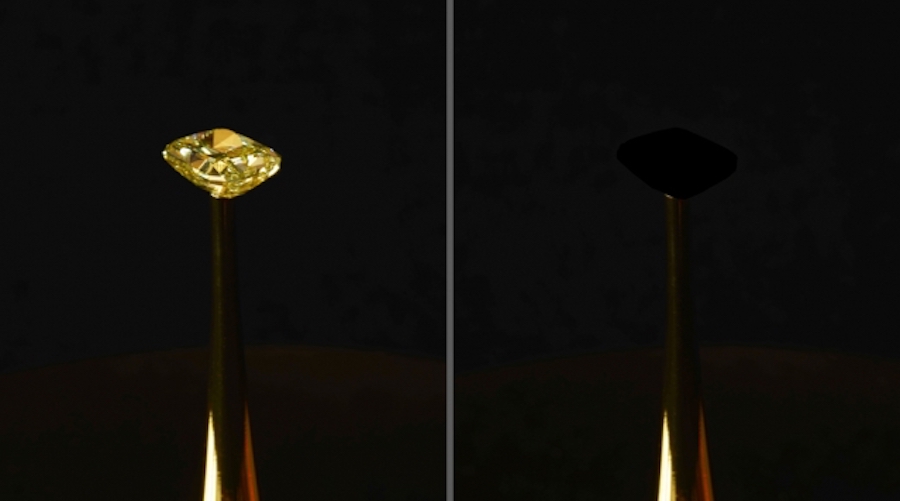MIT engineers ‘hide’ $2m-diamond under world’s blackest black material

MIT engineers created a material that is 10 times blacker than anything that has previously been reported.
To showcase how dark the material is, they have coated a $2-million,16.78-carat natural yellow diamond with the substance. The result is that the gem, which is normally very brilliant, appears as a flat, black void.
The researchers didn’t intend to engineer an ultrablack material. Instead, they were experimenting with ways to grow carbon nanotubes on electrically conducting materials such as aluminum, to boost their electrical and thermal properties
The experiment has been turned into an art installation titled “The Redemption of Vanity,” a collaboration between Brian Wardle, professor of aeronautics and astronautics at MIT, and his group, MIT Center for Art, Science, and Technology artist-in-residence Diemut Strebe, and LJ West Diamonds.
The ultra-black material is made from vertically aligned carbon nanotubes, or CNTs — microscopic filaments of carbon, like a fuzzy forest of tiny trees, that the team grew on a surface of chlorine-etched aluminum foil. The foil captures at least 99.995% of any incoming light, which means that it reflects 10 times less light than all other superblack materials, including Vantablack.
According to Wardle, the CNT material, aside from making an artistic statement, may also be of practical use, for instance in optical blinders that reduce unwanted glare, to help space telescopes spot orbiting exoplanets.
In fact, astrophysicist and Nobel laureate John Mather, who was not involved in the research, is exploring the possibility of using the superblack material as the basis for a star-shade — a massive black shade that would shield a space telescope from stray light.
“Optical instruments like cameras and telescopes have to get rid of unwanted glare, so you can see what you want to see,” he said in a media statement. “Would you like to see Earth orbiting another star? We need something very black. … And this black has to be tough to withstand a rocket launch. Old versions were fragile forests of fur, but these are more like pot scrubbers — built to take abuse.”
{{ commodity.name }}
{{ post.title }}
{{ post.date }}


Comments
Jim G
“Would you like to see Earth orbiting another star?” WTH?
Better double check your notes, scientist probably said ‘…see Earth-like planet orbiting another star’